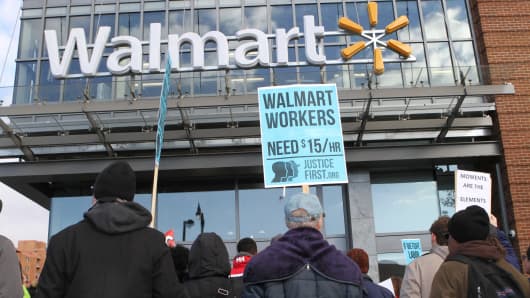Don't look now, but a long-overdue rise in worker paychecks is beginning to take hold. And those raises are flowing all the way down to the bottom of the income ladder.
Wal-Mart Stores has announced that more than 1.2 million employees would get a raise in 2016, eventually bumping up its minimum wage to $10 an hour. Last summer, McDonald's raised the average worker's pay to almost $10 per hour. (Those raises were limited to company-owned outlets; franchisees operate the bulk of the chain's U.S. locations.)
Starbucks said it will raise worker pay in its U.S. stores beginning this fall, Chief Executive Howard Schultz said in a letter to employees on Monday. The company said the move will boost paychecks between 5 percent and 15 percent for roughly 150,000 workers in 7,600 U.S. cafes.
JPMorgan Chase said Tuesday that the nation's largest bank will begin handing out raises to the 18,000 workers at the bottom of the company's wage scale.
"A pay increase is the right thing to do," JPMorgan CEO Jamie Dimon wrote in an opinion piece for Tuesday's The New York Times.
It's also become increasingly necessary, as a tight labor market is making it harder for employers to fill new positions or hold on to the workers they have.
For decades, American workers' wages rose roughly in line with the amount of goods and services they produce. In 2001, however, for a host of reasons that economists are still debating, those wage gains began to stall — even as workers continued to produce more per hour.



